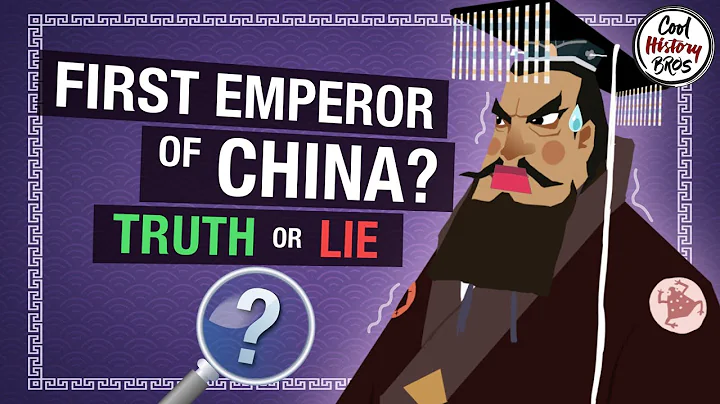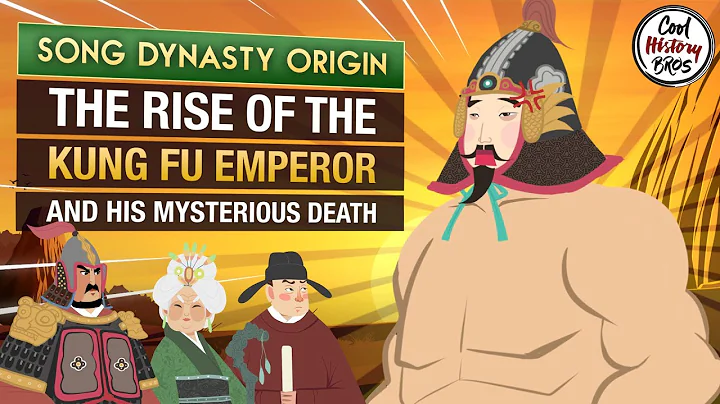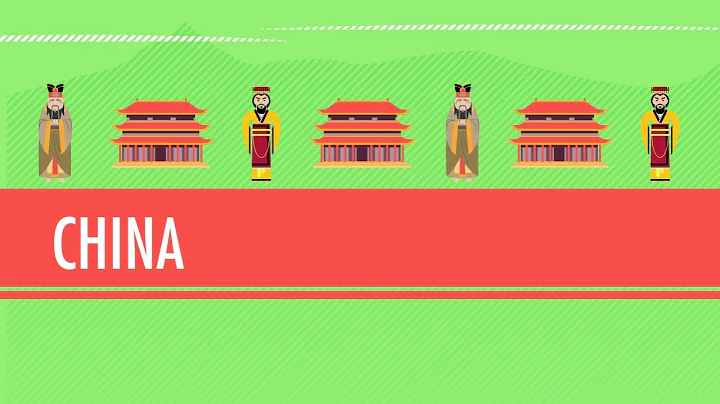
Jiang Tang Yao, also known as Yao, also known as Tang Yao , was the first emperor of the Chinese clan alliance era Emperor Yao Tao Tang clan regime. His grandfather was Emperor Zhi Jiang Mei, the fourteenth emperor of the Qingyang clan regime. His father was the 16th emperor Jiang Sixui, the 15th emperor Jiang Siji was his uncle, and the 17th emperor Jiang Kuang'er (Emperor of Prey) was his eldest brother. Tang Yao's father Jiang Si then married Qingdu, a daughter of Chen Feng's family, and lived in Danling.
In the twenty-fourth year of Si Sui (Renwu, 2379 BC), Tang Yao was born in Qingdu. Yao was smart and studious since he was a child. When he was 15 years old, he was a resourceful and eloquent man who was granted the title of Taoyi (now Nantaoqiu, Heze City, Shandong) by his father. At the age of 18, he was granted the title of Tangyi (now northwest of Tang County, Baoding City, Hebei). , was originally called "Tang Yao". His father, Jiang Sixui, was the emperor Ku in the history books. He had four sons: the first was Zhi, the second was Qi, the third was Qi, and the fourth was Yao. The bird of prey is Jiang Kuang'er, the last emperor of the Qingyang clan, who was the emperor's favorite. When he was in power, he relied on his cronies and was greedy for pleasure, which led to rebellions among the people, frequent disasters, and turmoil. At that time, Tang Yao's fiefdom also suffered from drought, but he effectively led the local residents to dam the river and divert water to irrigate the fields. He not only defeated the drought, but also achieved a bumper harvest, causing many victims from other places to flee to Tang Kingdom. Tang Yao accepted and rescued victims from various places and won the respect of all people.
At this time, the major tribes of Dongyi (Shandong Peninsula) rebelled one after another. They believed that the power of Emperor Zhi's regime had been exhausted, and the Tokazu tribe at that time should rule the world.

The Ten Days clan is the ten branches of Shaohao Xihe clan. "The Classic of Mountains and Seas - Dahuang Nan Jing" records: "Xihe, the wife of Emperor Jun, was born on the tenth day." What is mentioned here is the ten days. Japanese origin. Emperor Shaohao married a woman from the Xihe family and made her responsible for observing the changes in the sundial. Later, the Xihe clan gave birth to 10 sons (the 10 sons here refer to the ten branches of the Xihe clan, not children in a narrow sense), and they were named after the day, which is called: "Rijia, Riyi, Riyi". B, Ri Ding, Ri Wu, Ri Ji, Ri Geng, Ri Xin, Ri Ren, Ri Gui. The 10 sons of Xihe developed into ten important branches, collectively called the "Ten Days Clan".
At this time, the Ten Days tribe first rebelled and invaded the area ruled by the Qingyang clan of Emperor Zhi; then, other tribes in Dongyi responded and rebelled one after another. The Fengxi tribe of Fangyi, the Snake Xiu tribe of Renyi, the Fengbo tribe of Fengyi, the Shaohao chiseled teeth tribe, the Huangyi Yaoyao tribe, and the Yuyi Jiuying tribe declared independence. The southeastern border of Di Zhi's regime is in a state of war. In the face of rebellions from princes and Fang Kingdom , Di Zhi, as the leader of the central tribal alliance, ignores them and remains obsessed with his own enjoyment. Seeing this, Tang Yao contacted some loyal and brave clan tribes to jointly fight against the rebellion. First, he joined forces with the Yi tribe to defeat the Ten-ri tribe, and killed nine Japanese leaders, leaving only one who was willing to surrender, and was named the chief of the Japanese tribe to lead the entire Japanese tribe. This counter-insurgency war lasted for three years before it ended with Tang Yao's victory.
In the twelfth year of Emperor Zhi (Jiachen, 2357 BC), Tang Yao led the major clan alliance groups to defeat natural disasters , quell domestic rebellions, and won the support of the people all over the world. The chiefs of the clan alliance challenged Emperor Zhi, forcing him to abdicate and abdicate the throne to his younger brother Tang Yao.
After Tang Yao ascended the throne, he moved the imperial capital to Pingyang in central Hebei. This area is the birthplace of Chiyou's Jiuli clan and the place where Huangdi's Xuanyuan clan flourished. Therefore, Tang Yao believed that the mountains and rivers here had the aura of reaching heaven and earth, and that if he established his capital here, he would be protected by the gods of heaven and earth.
In the imperial capital Pingyang, Tang Yao rewarded the ministers who had made great achievements in pacifying the world: he appointed Yi, the divine archer, as Shezheng, and sealed him in Qiongshi (southwest of Huoqiu County, Liu'an City, Anhui Province today). He gave him the surname "Ju" and the title "You". The Qiong family later developed into a poor country; Tang Yao's second brother was abandoned by the late emperor and was granted the title of Taiyi . He specialized in the research of agricultural production and invented a series of new technologies for growing grains, which was deeply loved by the local people. .After Tang Yao heard this, he summoned him into the court and appointed him as Nongzheng, named "Houji", in charge of the country's agriculture; he appointed his third brother Ji as the Grand Sima , in charge of the army; he appointed Xizhong, Uncle Xi, and He Zhong and He Shu were appointed as Li Zheng, in charge of the calendar; Gong Gong 's descendants were appointed as Gong Zheng, in charge of industry (textile, pottery, bone making, wood making, jade making, metallurgy, etc.); Yao Gun was appointed as Shuizheng, He was in charge of the management of rivers in the world; he appointed the descendants of Yan Bo as Huozheng and the descendants of Shichen as Jinzheng; he appointed Kui as Le Gong, Gao as Dali, and Zhong as Engineer.
In the second year of Emperor Yao (Yisi, 2356 BC), Tang Yao ordered the promulgation of a new calendar, which stipulated that each year has 366 days, divided into four seasons: spring, summer, autumn and winter. Each year has 12 months, and each month has 30 days. The leap month method is used to add one month every five years to adjust the seasonal errors in the four seasons; it also determines the accurate times of the spring equinox, summer solstice, autumnal equinox, and winter solstice, so that farmers can accurately arrange agricultural production according to the seasons.
In the fifth year of Emperor Yao (Wushen, 2353 BC), Tang Yao led some ministers to patrol the four mountains .
In the spring and February of the same year, he went hunting eastward to Mount Tai.
In the fifth month of summer, we went on a hunting tour to the south to Hengshan Mountain.
In autumn and August, the hunting tour to the west reaches Mount Huashan.
In winter and November, the hunting tour in the north reaches Hengshan .
At the end of the year, when he returned from a hunting tour, the Yueshang Kingdom of Nanyi sent an envoy to congratulate him and presented him with a big turtle. According to the envoy, this tortoise is a divine tortoise with a lifespan of more than a thousand years. It is more than three feet in diameter. The back of the tortoise is densely carved with tadpole inscriptions, recording the history of mankind since the beginning of the world. After Tang Yao heard this, he ordered his historians to translate these precious histories into the popular writing of the time and record them in history books.
In the seventh year of Emperor Yao (Gengxu, 2351 BC), someone discovered a unicorn in a lake outside the capital. At the same time, a phoenix built its nest in the palace attic.
In the twelfth year of Emperor Yao (Yimao, 2346 BC), Tang Yao ordered conscription across the country and established a standing army specifically to maintain social order.
In the sixteenth year of Emperor Yao (Jiwei, 2342 BC), the Qusou family in the west submitted to the Emperor Yao Tao Tang's regime. The Qusou family was a small country in Xirong. It was a nomadic nation and its main activities were in the present-day Qinghai and Gansu areas.

In the nineteenth year of Emperor Yao (Renxu, 2339 BC), the Yellow River flooded and flooded many houses in the middle and lower reaches of the Yellow River. Tang Yao ordered Gonggong, who was in charge of water conservancy, to lead the flood control. However, Gonggong blindly adopted the method of "cutting high places and making up for low places", which resulted in more serious floods and greater losses to people's lives and property.
In the 21st year of Emperor Yao's reign (Jiazi, 2337 BC), Gonggong had been controlling the floods for three years without success. Tang Yao wanted to remove him, but Guodou stepped in to protect him, believing that Gonggong had been water-positive or Gongzheng for generations. , has rich experience in water control. Although the water control failed this time, lessons can be learned from it, which will be beneficial to future water control. It is proposed that Gonggong should take responsibility for the crime and continue to be responsible for water control. Tang Yao agreed to the request and continued to let Gonggong lead the people to control floods. It happened that there was a drought that year, the Yellow River recovered, and the floods receded without control.
In the 40th year of Emperor Yao (Guiwei, 2318 BC), 62-year-old Tang Yao died. His body was buried in Yao Mausoleum outside Pingyang City (now Southeast Pingyang Town, Fuping County, Baoding City, Hebei Province).
Emperor Yao and Tao of the Tang Dynasty initially established their capital in Pingyang. The second emperor Yi Fangxun moved the capital to Yaocheng (now the east old city of Longyao County, Xingtai City, Hebei), and the third emperor Jijiang moved the capital to stay (now the west of Jiyuan City, Henan). , the fourth emperor Jiang Qi moved his capital to Yangping (today's Yaodu District, southwest of Linfen City, Shanxi Province), and the sixth emperor Jiang Mi moved his capital to Yuanyang (today's Chengguan Town, Yuanyang County, Xinxiang City, Henan Province).
Emperor Yao, Tao and the Tang Dynasty had a total of six emperors, and the country was passed down for 230 years (2357 BC - 2128 BC).
The first emperor: Emperor Yao was in power for forty years (2357 BC - 2318 BC).
The second emperor: Emperor Qi was in power for fifty-three years (2318 BC - BC). 2266 years)
Three emperors: Emperor Jiang reigned for forty-three years (2266 BC - 2224 BC)
Four emperors: Emperor Qi reigned for thirty-nine years (2224 BC) Years - 2186 BC)
Five emperors: Di Qiu reigned for twenty-two years (2186 BC - 2165 BC)
Six emperors: Di Mi reigned for thirty-eight years (2165 BC - 2128 BC)









![[Documentary] The Daming Palace &Tang Dynasty (618 - 907 AD) 唐朝大明宫 - DayDayNews](https://i.ytimg.com/vi/SoSIpWbqS60/hqdefault.jpg?sqp=-oaymwEcCOADEI4CSFXyq4qpAw4IARUAAIhCGAFwAcABBg==&rs=AOn4CLDINzuwhoDWKXI3XRys4PUpsrGKJA)











